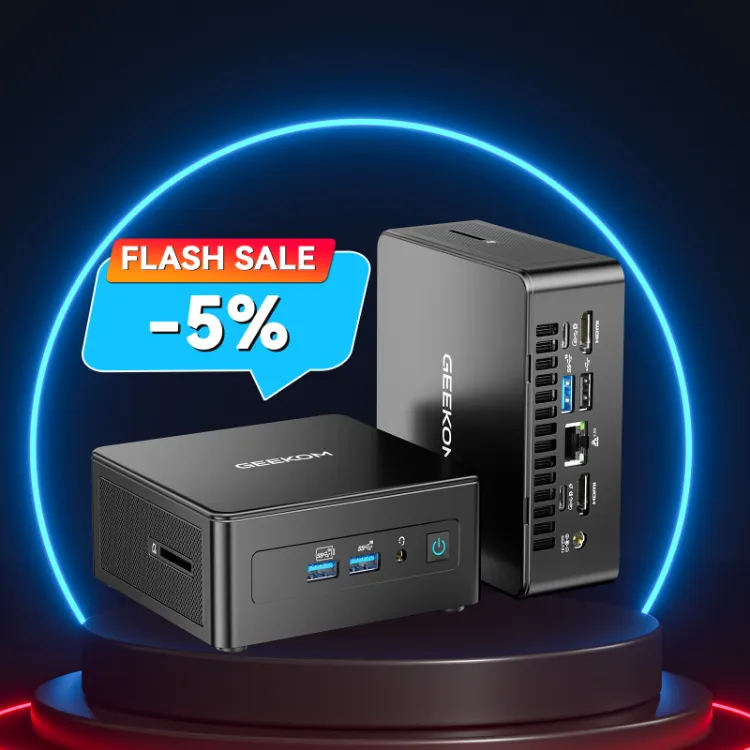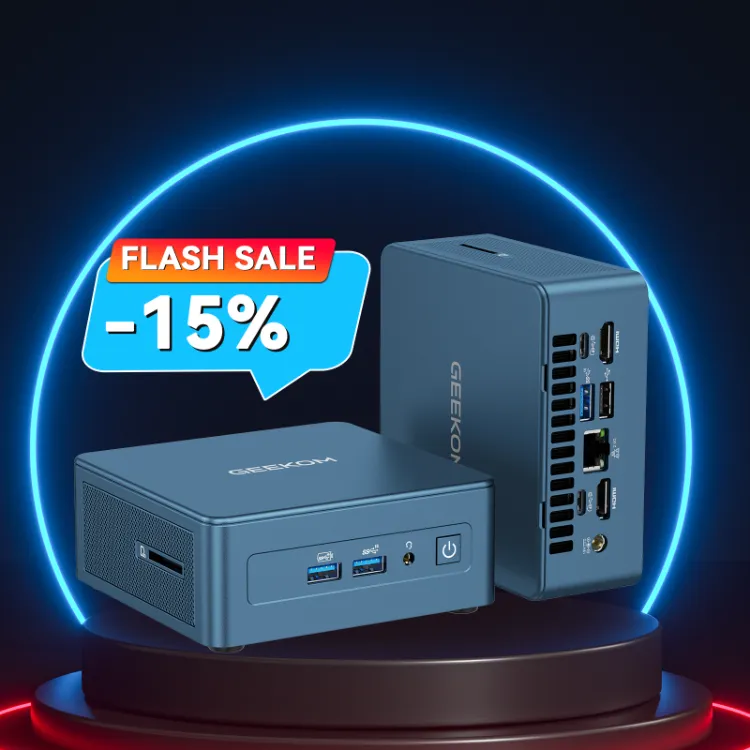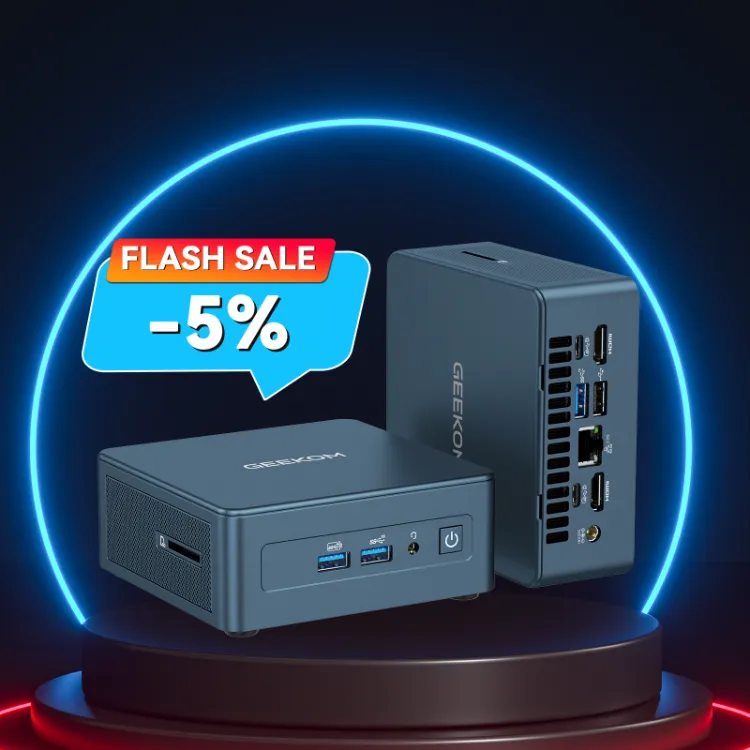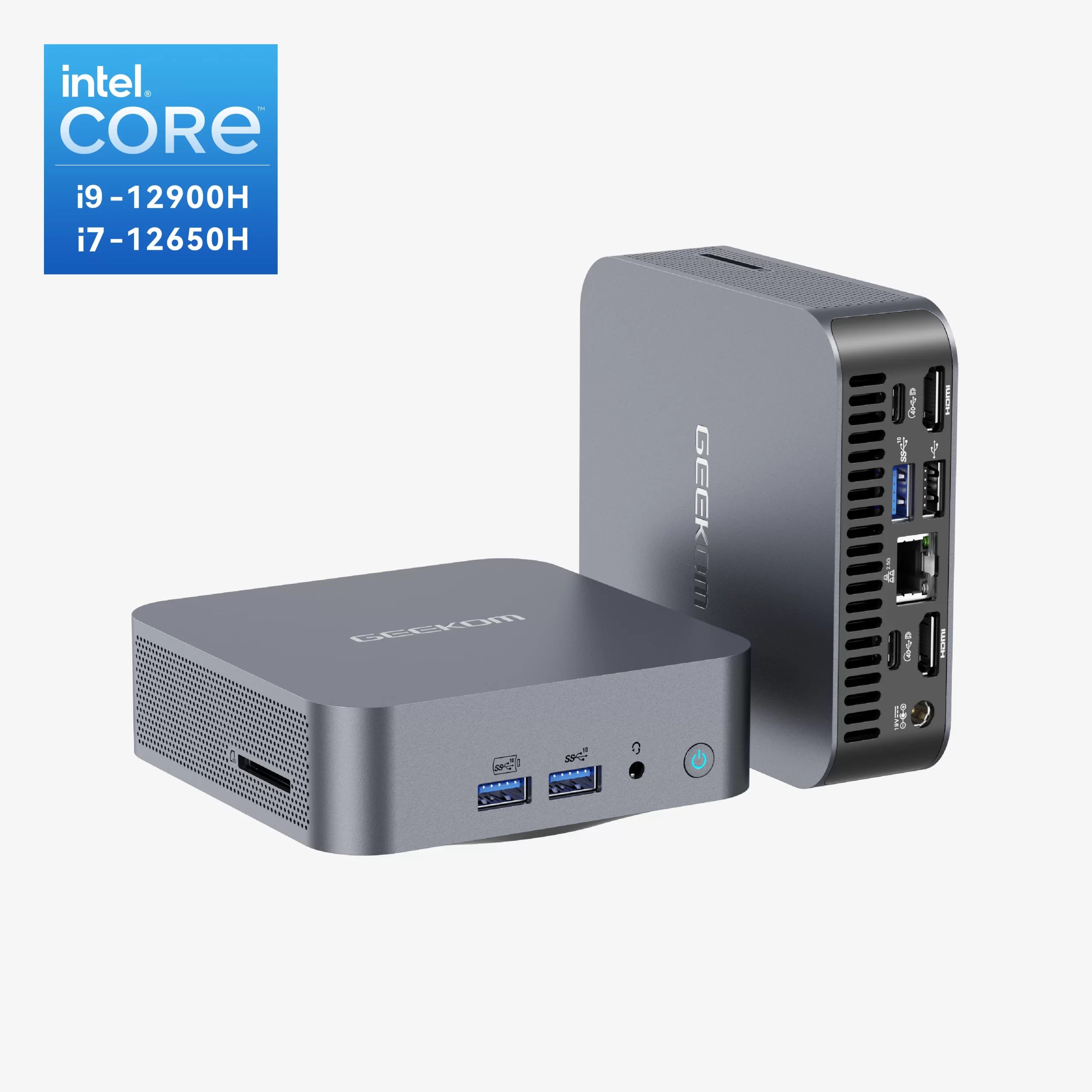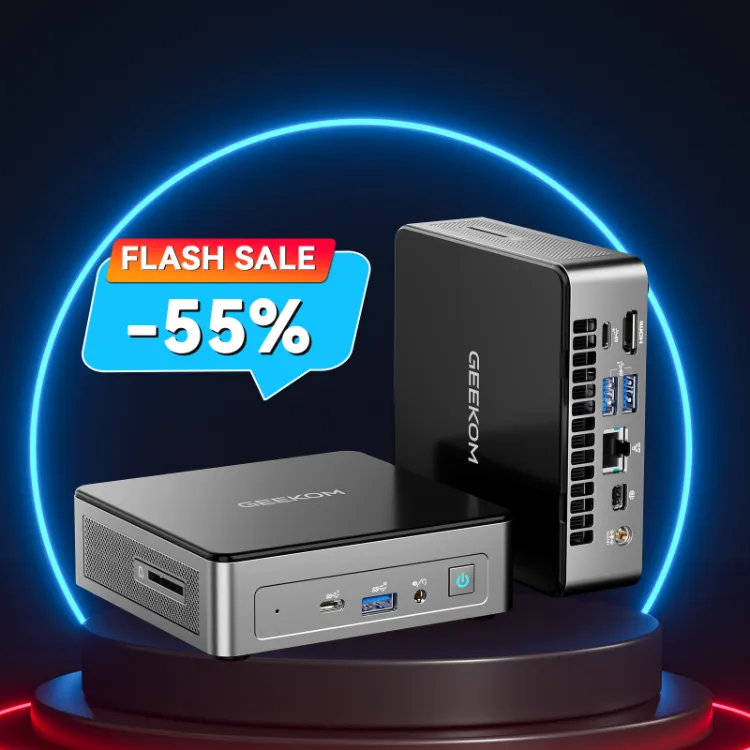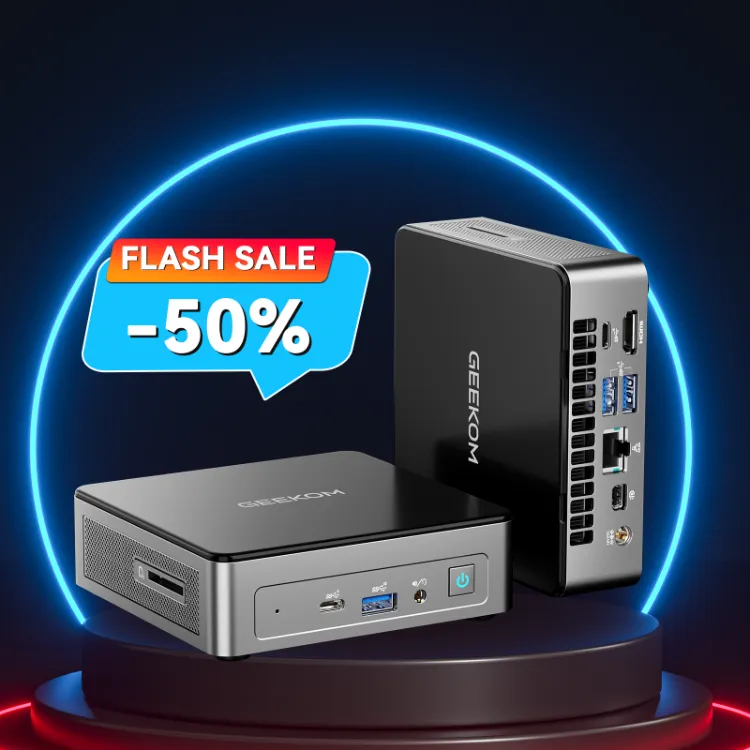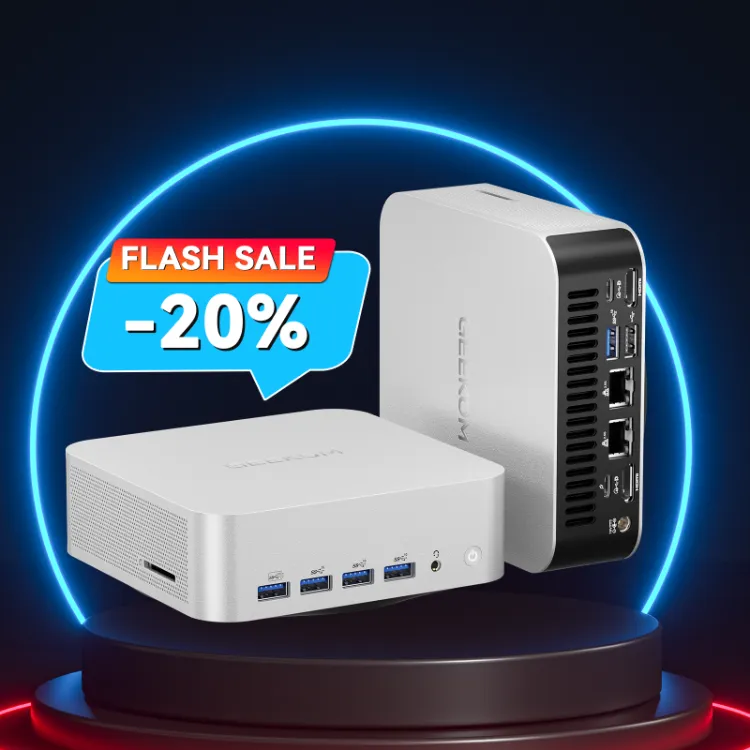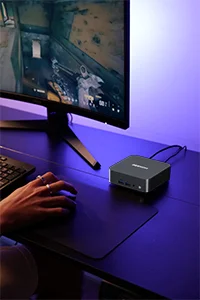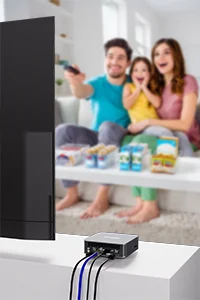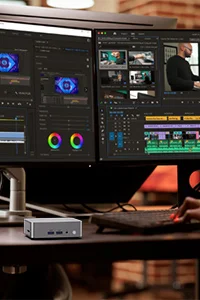Best Mini PCs Comparison for Work, Gaming, And Creative Tasks
Intel vs AMD Mini PC
| Product Image | 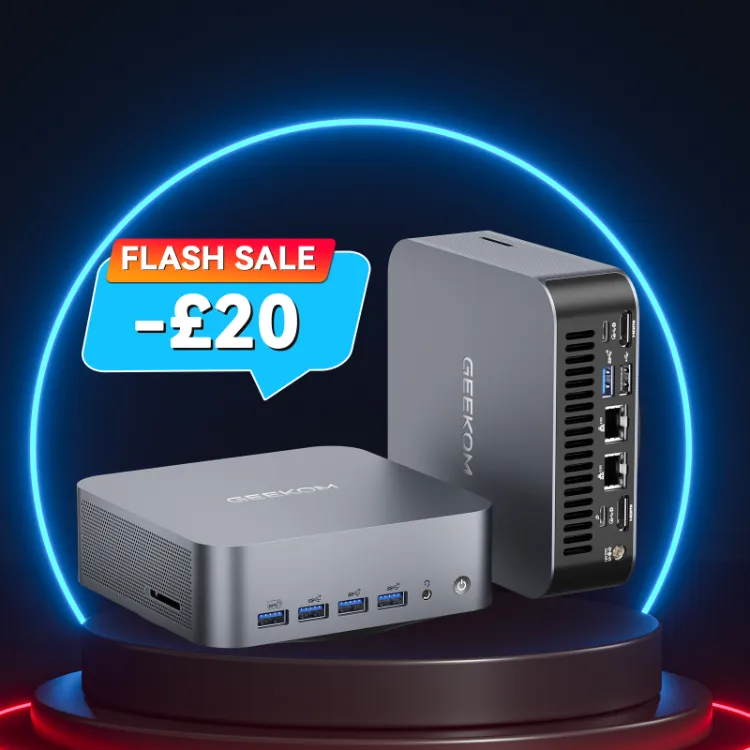 | 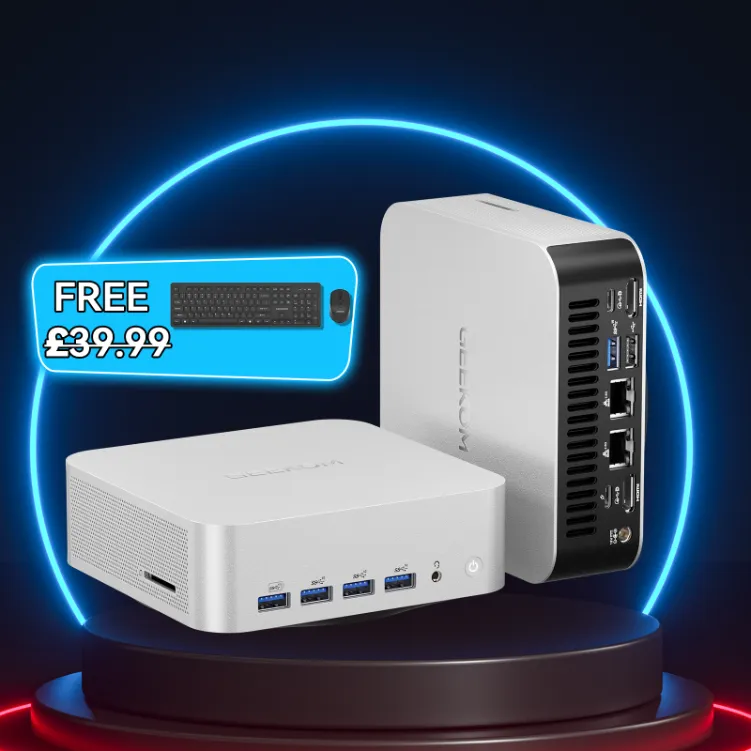 |
|---|---|---|
| Product | ||
| Product Title | GEEKOM GT2 Mega AI Mini PC Intel® Core™ Ultra 9 285H | GEEKOM A9 Max AI Mini PC AMD Ryzen AI 9 HX 370 |
| Link | Buy Now | Buy Now |
| Price | Over £899 | Over £899 |
| Application Scenarios | For Business<br>For Creatives<br>For Gaming | For Creatives<br>For Gaming |
| Dimensions | 135 × 132 × 46.9 | 135 mm × 132 mm × 46.9 mm |
| Processor | Intel® Core™ Ultra 9 285H | AMD Ryzen™ AI 9 HX 370 |
| Graphics | Intel® Arc™ 140T GPU / 13TOPS N | AMD Radeon™ 890M Graphics |
| Memory | Dual-channel DDR5 5600 MT/s, up to 64 GB | Dual channel DDR5 5600MHz, up to 64GB |
| Storage | M.2 2280 PCIe 4.0 ×4, up to 2 TB | M.2 2280 PCIe 4.0 ×4, up to 2 TB |
| l/O Ports | 5 × USB 3.2 Gen 2 Type-A<br>1 × USB 2.0 Type-A<br>2 × USB 4.0 Type-C<br>1 × 3.5 mm Stereo headphone connector<br>2 × RJ45<br>2 × HDMI 2.0<br>1 × DC in<br>1 × Power Button | 5 × USB 3.2 Gen 2 Type-A<br>1 × USB 2.0 Type-A<br>2 × USB 4.0 Type-C<br>1 × 3.5mm front stereo headset jack<br>2 × RJ45<br>2 × HDMI 2.1<br>1 x Power Button<br>1 × Kensington Lock<br>1 × SD Card 4.0 |
| Kensington Lock | YES | YES |
| SD Card Reader | YES | YES |
| Ethernet | 10/100/1000/2500 Mbps RJ45 × 2 | 10/100/1000/2500 Mbps RJ45 × 2 |
| Bluetooth | Bluetooth® v5.4 | Bluetooth® v5.4 |
| Wi-Fi | Wi-Fi 7 | Wi-Fi 7 |
| Operating System | Windows 11 Pro | Windows 11 Pro |
| Hot Picks | New Arrivals | NO |
How to Choose AMD vs Intel?
What's the difference and why do most pick AMD?
Key Differences between AMD and Intel processors:
AMD (Ryzen processors)
- Generally offers more cores/threads at similar price points
- Known for better multi-threaded performance (great for video editing, 3D rendering, streaming)
- Tends to run hotter but has improved significantly in recent generations
- Uses AM4/AM5 socket with better upgrade paths (same motherboard supports multiple CPU generations)
Intel (Core processors)
- Historically had stronger single-core performance (better for gaming at higher framerates)
- Generally runs cooler and more power-efficient in recent generations
- More frequent socket changes, meaning less motherboard longevity
- Often seen as the “safer” choice with broad compatibility
The main reasons people often choose AMD:
- Better value – You typically get more cores/threads for your money
- Multi-tasking performance – Excellent for workstations, content creation, and productivity
- Upgrade path – AMD kept the AM4 socket for years, letting people upgrade CPUs without changing motherboards
- Competitive gaming performance – AMD has closed the gaming gap significantly with Ryzen 5000/7000 series mini PCs.
How to choose AMD or Intel for gaming?
1.Performance Considerations
Frame rates matter most
- At 1080p with high refresh rates (144Hz+), CPU matters more – Intel often has a slight edge in pure FPS
- At 1440p or 4K, your GPU becomes the bottleneck, so CPU choice matters less – either brand works great
Current gaming performance
- Intel’s 13th/14th gen and AMD’s Ryzen 7000 series are extremely close in gaming
- Differences are often 5-10% in CPU-bound scenarios, which is barely noticeable in real use
2. Practical Decision Factors
Budget approach
- Look at what gets you the best CPU + GPU combo for your total budget
- Sometimes saving £50 on a CPU means affording a better graphics card, which helps gaming more
What to prioritize:
- Pure gaming only → Intel slight edge (especially i5-13600K/14600K or i7 models)
- Gaming + streaming/recording → AMD often better (more cores help with encoding)
- Gaming + productivity work → AMD usually wins (better multi-threaded performance)
- Budget gaming → Check current prices, AMD’s Ryzen 5 7600X or Intel i5-13400F are both excellent
- Future-proofing → AMD’s AM5 platform promises longer support
How to choose AMD or Intel for creatives?
For creative work, the choice becomes much clearer than gaming! Here’s the breakdown:
AMD Usually Wins for Creatives
Why AMD is often the better choice:
- More cores for your money – Creative apps love multi-threading (video rendering, 3D work, simulations)
- Better multi-tasking – Running Premiere + After Effects + Photoshop simultaneously
- Rendering performance – AMD’s Ryzen 9 chips often beat comparable Intel in render times
- Better value – You can put the savings toward more RAM or faster storage
When Intel Makes Sense
Intel can be better if:
- You use Intel-optimized software (some Adobe apps historically favored Intel, though this gap has narrowed)
- You need Quick Sync hardware encoding (Intel’s built-in encoder is excellent for streaming/recording)
- You prioritize single-threaded tasks (some plugins, effects processing)
- You use Thunderbolt heavily (Intel platforms traditionally had better support)
Choosing by Creative Work Type
Video editing (Premiere, DaVinci Resolve) → AMD Ryzen 9 (7900X, 7950X) – more cores = faster renders
3D rendering (Blender, Cinema 4D) → AMD strongly recommended – rendering scales beautifully with cores
Photo editing (Lightroom, Photoshop) → Either works great, focus on fast storage and RAM instead
Music production (DAWs) → Either brand fine, prioritize single-core speed and stability
Motion graphics (After Effects) → Slight Intel edge due to Quick Sync, but AMD works great too
Mixed workloads → AMD Ryzen 9 for versatility
FAQ
What are the benefits of using a mini PC comparing to a laptop or desktop computer?
Mini PCs are compact, energy-efficient, and cost-effective, making them versatile for a variety of needs:
-
- Home Office Workers: Ideal for remote work with powerful, quiet performance.
- Content Creators: Great for video editing, graphic design, and content creation.
- Gamers: Equipped with high-end GPUs, suitable for gaming and VR.
- Students: Affordable options for online classes and school tasks.
- Media Enthusiasts: Perfect for 4K streaming and home theater setups.
- Small Business Owners: Reliable and energy-efficient for business applications.
- IT Administrators: Useful for server applications, virtualization, and network monitoring.
- Digital Nomads: Portable and lightweight for travel and work on the go.
- Retail Operators: Durable and efficient for point-of-sale systems and kiosks.
Which factors need to be taken into account when purchasing the best mini PC?
Seek top Mini PCs with powerful processors like Intel or AMD, 32GB of RAM, and at least 1TB of SSD storage. While Intel Celeron or Pentium processors handle basic tasks, more intensive applications may require an Intel Core i7/i9 or AMD Ryzen 7/9.
What kind of ports and connections should I expect?
Look for:
- USB 3.0/3.1, USB-C, and legacy USB 2.0
- HDMI 2.0 or DisplayPort (for dual monitor support)
- Ethernet (often gigabit or 2.5Gbps)
- Audio jack, SD card slot (on some models)
- Wi-Fi 6 and Bluetooth 5.2
Check the buying guide to make sure it supports the peripherals you use regularly.


